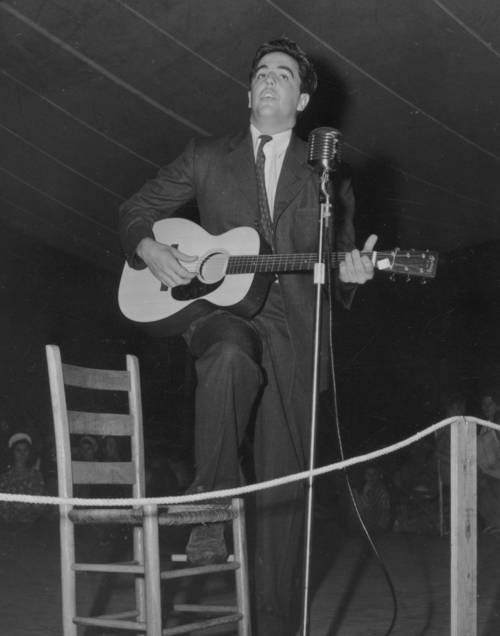
FAQ About Alan Lomax

Who was Alan Lomax?
Alan Lomax was an American ethnomusicologist, folklorist, and field collector of folk music. He is renowned for his significant role in the preservation and documentation of traditional music across the United States and around the world. Lomax conducted field recordings of countless musicians and singers, many of whom might otherwise have gone unnoticed by mainstream audiences. His work has had a lasting impact on the study of folk music and culture.

What was Alan Lomax's main contribution to music?
Alan Lomax's main contribution was his extensive fieldwork recording and documenting folk music traditions worldwide. He captured thousands of songs and interviews, which helped preserve and popularize many music styles that otherwise might have been forgotten. His recordings include contributions from artists like Lead Belly and Muddy Waters, and they are invaluable resources for both scholars and fans of folk music.

Where did Alan Lomax conduct his fieldwork?
Alan Lomax conducted his fieldwork in a variety of locations. In the United States, he traveled extensively through the Southern states, recording blues, folk, and spiritual music. Internationally, he conducted fieldwork in countries such as Spain, Italy, and the Caribbean, among others, documenting a wide array of musical traditions.

How did Alan Lomax record the music he collected?
Alan Lomax used portable recording equipment to capture the music he collected during his fieldwork. In the early days, this often involved lugging heavy and cumbersome equipment to remote locations. Despite these challenges, Lomax's dedication to field recording allowed him to capture authentic performances directly from the musicians and communities themselves.

What is The Lomax Collection?
The Lomax Collection refers to the extensive archive of field recordings, interviews, photographs, and notes compiled by Alan Lomax throughout his career. This collection is housed at the American Folklife Center at the Library of Congress and is considered one of the most important resources for the study of folk music traditions worldwide.

Did Alan Lomax work with any famous musicians?
Yes, Alan Lomax worked with several famous musicians. He recorded artists such as Lead Belly, Muddy Waters, and Woody Guthrie, helping to bring their music to a broader audience. His recordings not only preserved these artists' work but also played a part in the popularization of folk music in the mid-20th century.

Why is Alan Lomax important to the study of ethnomusicology?
Alan Lomax is important to ethnomusicology because of his pioneering methods and comprehensive documentation of folk music from diverse cultures and regions. His work provided a framework for ethnomusicologists to explore the relationship between music and culture, and his extensive archives serve as a critical resource for academic study and cultural preservation.

How has Alan Lomax influenced modern music?
Alan Lomax's influence on modern music can be seen in the way he helped bring attention to the roots of many music genres, such as blues, folk, and country, which in turn have shaped contemporary rock, pop, and hip-hop. Many artists have cited his recordings as an inspiration, and his archival work continues to be a source of inspiration and information for musicians and scholars alike.

What are some notable works of Alan Lomax?
Some notable works of Alan Lomax include his field recordings published in the collections such as "The Anthology of American Folk Music" and his writings, including books such as "The Folk Songs of North America" and "The Land Where the Blues Began." These works have played a significant role in documenting and sharing the rich traditions of folk music.

What challenges did Alan Lomax face in his work?
Alan Lomax faced several challenges during his fieldwork, including technical limitations with recording equipment, geographical and logistical difficulties in reaching remote areas, and at times, resistance from local communities unfamiliar with his mission. Despite these obstacles, his persistence was key to successfully documenting numerous cultural expressions globally.
